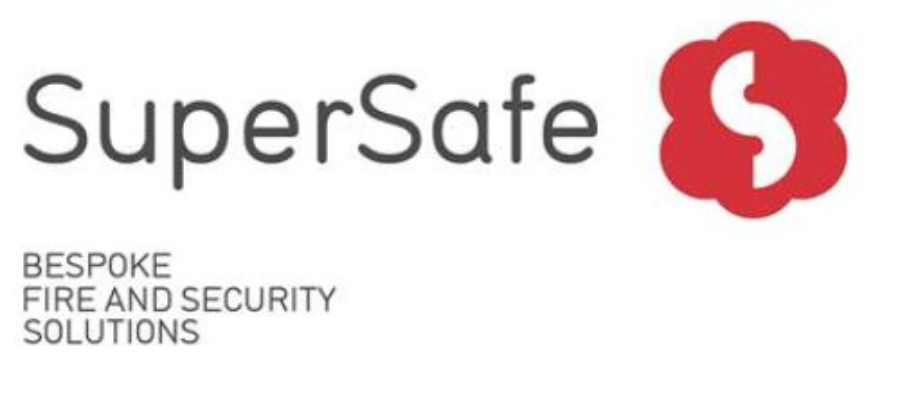Title Page
-
Site conducted
-
Type B Appliance Owners Name, Company & Operator (as applicable)
-
Gas Fitter Name & Practitioners Number
-
Gas Fitting Notice Number, Type B Appliance Compliance Plate Number & Acceptance Number
-
Brief description of Appliance
-
Location
-
Conducted on
COVID Questions
-
Do you have reason to suspect that anyone at the premises has been exposed to Coronavirus (COVID-19)?
-
■ Advise the consumer that the inspection will need to be cancelled and rescheduled..
■ Leave the premises and ensure personal hygiene practices are observed
■ Advise your manager of the situation immediately. -
Is anyone at the premises:<br>• displaying flu-like symptoms,<br>• in self-isolation due to having contact with someone with a suspected or diagnosed case of Coronavirus (COVID-19), or<br>• in self-isolation due to the government protocols for overseas travellers entering or returning to Australia?<br>
-
■ Advise the consumer that the inspection will need to be cancelled and rescheduled..
■ Leave the premises and ensure personal hygiene practices are observed
■ Advise your manager of the situation immediately. -
Is anyone at the premises a vulnerable or at-risk person, such an elderly person or a person with a pre-existing medical condition?
-
■ Advise the consumer that the inspection will need to be cancelled and rescheduled..
■ Leave the premises and ensure personal hygiene practices are observed
■ Advise your manager of the situation immediately.
-
Is the inspection Proactive or Reactive
-
nature of complaint or incident
-
Gas Type
-
Gas Inlet Pressure to Appliance (kPa)
Markings and instructions
-
Appliance data plate contains in accordance with clause AS 3814 4.1 (photograph if applicable): <br>• Original equipment manufacturer’s name<br>• Model identification, Nominal gas consumption<br>• Gas type<br>• Maximum and minimum gas supply pressure<br>• Purge times, Gas pressure at burner head for nominal gas consumption<br>• Combustion chamber volume<br>• Maximum appliance design temperature<br>• Total volume swept by the combustion products in passing from the burner to the flue connection<br>• Serial number<br>• Date of manufacture<br>• Purge Volume for combustible atmospheres<br>• Dilution air volume m3/min at 20oC (where applicable)<br>• Design solvent (where applicable) including type and quantity<br>• Other markings as required (including as a condition of acceptance)
-
Instructions, available and sufficient
Appliance Design and Construction (AS 3814 Clause 2.1 to 2.8)
-
Suitable location
-
Controls and indicators are adequate and well located
-
Adjustable devices
-
Sound construction
-
Parts secure
-
No sharp edges
-
Appliance supports are acceptable
-
Provision to sample flue gases
-
Access to controls, burners and safety devices is acceptable
-
Flame visible
-
Surface and component temperatures compliant
-
Electrical connection, ease and cross-connection compliant
-
Operator access to controls acceptable
-
Materials suitable
Gas pipework and valve trains (Clauses 2.9 to 2.15)
-
Appliance pipework complies with AS/NZS 5601.1 or AS 4041 (Clause 2.9.1)
-
Appliance pipework is gas tight (Clause 2.9.1)
-
Valve train enclosure adequately ventilated (Clause 2.9.2)
-
Pressure rating of valve train components acceptable (Clause 2.9.3)
-
If pressurized air, oxygen or standby gases used is protective device(s) compliant with AS 3814 Clause 2.9.4
-
Multi position manual valve indication - function of each position clearly indicated (Clause 2.9.5)
-
Design of valve handles, dials and pointers compliant with AS 3814 clause 2.9.6 - not capable of being incorrectly assembled , securely attached to spindle and do not contain loose parts etc.
-
Suitable appliance isolating valve including consistency with accepted application for acceptance (Clause 2.9.7)
-
Where multiple main burners are fitted and the appliance can continue to operate with one or more burners suitable burner isolation valves are installed (Clause 2.9.8.1)
-
Main burner can be isolated for commissioning including details of method (Clause 2.9.9.2)
-
Gas filter fitted if appliance inlet pressure >7 kPa (Clause 2.14.1)
-
If applicable, gas filter is able to prevent passage of particles greater than 1 mm and location is acceptable (Clause 2.14.2)
-
Acceptable gas pressure regulation is fitted including location, certification (if applicable), over pressure protection (including set point and sensing point), lock up, accuracy and venting and is consistent with accepted application for acceptance (Clause 2.10 & 2.11)
-
Acceptable pressure test point installed including location, orifice size and sealing of outlet (Clause 2.13)
-
SSOV's certified and consistent with accepted application for acceptance(Clause 2.15.1)
-
SSOV's operate at the approach or presence of an unsafe condition(Clause 2.15.2)
-
SSOV configuration correct for input and consistent with accepted application for acceptance (Clause 2.15.3)
-
SSOV's acceptable (Clause 2.15.6) (Rated for pressure, orientation, vent valve size)
-
SSOV's can not be bypassed (Clause 2.15.7)
-
A vented SSOV system is fitted with a compliant vent line to AS/NZS 5601.1 (Clause 2.15.8)
-
Position-proving system installed if applicable and as detailed in accepted application, and prevents burner start up including pre-purge in accordance with AS 3814 clause 2.15.9
-
Leakage detection system installed if applicable and as detailed in accepted application, and prevents burner start up including pre-purge in accordance with AS 3814 Clause 2.15.10
-
SSOV actuators installed in accordance with AS 3814 Clause 2.15.12
-
Additional gas pipework and valve train details as identified.
Combustion air controls (Clauses 2.16 to 2.21)
-
Clean and unobstructed combustion air
-
Atmospheric burner aeration - primary aeration controls corrosion resistant and constructed so that any build up of foreign matter will not adversely affect the flame.
-
Burner airflow to original equipment manufacturer specifications and accepted application
-
Proof of purge and combustion air flows - detector(s)<br>Purge Set: ..... Trip: ......<br>Combustion Set: ..... Trip: ......
-
Air flow detector(s) self-check operational
-
Safety shutdown occurs if air fails
-
Temperature of any air-gas mixture to a burner does not exceed <50% auto ignition temp of the gas.
-
Dampers are acceptable including:<br>• Fixed/Adjustable<br>• Secure, Interlocked for purge<br>• Interlocked burner ignition<br>• Automatic<br>• Maintain satisfactory combustion<br>• Failure mode correct<br>• Manual damper stops and indicators
-
Adequate Purge Flow- OEM and/or accepted application. If not ensure purge period is amended accordingly. <br>Purge time: ......<br>Purge Flow:.......
-
Purge timer/Interlock sealed or locked to prevent unauthorized or accidental change to setting
-
Minimum timer setting shall be clearly displayed immediately adjacent to the timer
-
Proof of recirculation zone fans Set: ..... Trip: ......
-
Natural draught purge requirements met if applicable including timer (if electronic SSOV fitted), instructions, door open if applicable, etc.
-
Other process controls tested.<br>Cause lockout ?<br>Set: ..... Trip: ......
Pilot burners
-
Pilot burners are appropriate including:<br>• Stable (Clause 2.23.1) <br>• Ignition of main burner (Clause 2.23.1)<br>• Manual ignition system (Clause 2.22.2)<br>• Support and location (Clause 2.1.7) <br>• Ignition systems (2.22)
Flame safeguards
-
Flame safeguards (Section 2.25) - Type confirmed with application for acceptance
-
Self-check and flame simulation acceptable
Ignition (Clause 3.2)
-
Starting sequence interlocks inhibit burner ignition as appropriate
-
Ignition complete within combustion chamber
-
Combustion stable
-
Ignition smooth and reliable
-
Start gas rate .............% O2
-
Oxygen flue gas readings <br>LOW MID HIGH DFAH
-
Carbon monoxide CO flue gas readings <br>LOW MID HIGH DFAH
-
Carbon dioxide CO2 flue gas readings <br>LOW MID HIGH DFAH
-
CO/CO2 ratio <0.02 Flue gas readings (Clause 3.6.1)<br>LOW MID HIGH DFAH
Main burners (Clause 3.3)
-
Flame safeguard operation sequences (Clause 3.5) Power interruption, sequence correct, safe on shutdown, re-ignition attempt appropriate
-
Any PES installed (if applicable) is consistent with accepted application and proof tested in accordance with AS 3814; including appropriate certificates/sign offs. Including hard wired, certified, SIL evaluated etc.
-
Gas air ratio controls appropriate and constant with accepted application including (Clause 2.28) <br>• General requirements design and configuration<br>• Source of ignition (O2 cell)<br>• Interference with interlocks<br>• Variations in control settings and control response<br>• Preheated combustion air control <br>• Requirements for independent gas and air,<br>• Special requirements for PES based Gas/Air ratio control<br>• Pneumatic control weep and sense lines
Specific appliances
-
Is there a Special appliance requirements High input appliances (Clause 5.2)
-
Multiple main burner ignition
-
Burner control
-
Flame safeguards
-
Continuous checking required?
-
Multiple burner supervision
-
Extra flame safeguard
-
Intermittent/permanent pilots
-
Is there a Air-gas mixing machines and mixing blowers (Clause 5.3)
-
Strength sufficient
-
Material satisfactory as per application for acceptance
-
Air-gas ratio fixing
-
Safety shut off system and operation
-
Pipework and fittings strength sufficient
-
Mixing blower outlet not exceeding 1 m
-
Blow out discs and non-return valve
-
Flame arrestors correct and correctly installed
-
Is there a Atmosphere generators and special atmospheres (Clause 5.4)
-
Water cooling system ........................... Set: ...........................
-
Flow indicators ................................................................
-
Venting of special atmospheres
-
Generator start up
-
Automatic atmosphere relief device ........................... Set: ...........................
-
Disposal of special atmospheres
-
Vent lines
-
Special atmosphere (combustible) Safe discharge, Reliable ignition, Flame arrestor
-
Flame arrestor operation
-
Piping for special atmosphere
-
Storage of special atmospheres
-
Compressed special atmosphere
-
Is there a Exothermic atmosphere generators
-
Low temperature limit ................Set: ................Trip: ............
-
Pressure detectors High: .......... Set: ...........Lockout: ...........
-
Low: .......... Set: ...........Lockout: ...........
-
Air-gas ratio control ................................................................
-
Is there a Endothermic atmosphere generators
-
Safety shut off valves ........................... Trip: ...........................
-
Air shut off device ........................... Trip: ...........................
-
Pressure detectors High gas: ........... Set: .......... Trip: ........
-
Low gas: ........... Set: .......... Trip: ........
-
High air: ........... Set: .......... Trip: ........
-
Is there a Process after burners (Clause 5.5)
-
Interlocking
-
Flame failure
-
Excessive process products limit Set: ......................Trip: ......................
-
Combustion air supply
-
Shutdown
-
Air in process exhaust gas
-
Pre-purge Time: ........ Rate: ........... Omission: ........
-
Is there a Steam and hot water boilers (Clause 5.6)
-
Registered Number:
-
Emergency valve (AS/NZS 5601.1)
-
Safe, accessible and remote
-
Type
-
Appropriate sign
-
Is there a Direct-fired air heaters (Clause 5.7)
-
Air supply directly from outside
-
Air flow detector No flow: ........... Set: .......... Trip: ........
-
High temperature limit Trip: ........... Set: .......... (80°C max)
-
Start gas rate (10% max) Rate: .........................................................
-
Combustion CO2: ........ % ......... CO: ........ ppm
-
Pre-purge Time: ................. Rate: ...........................
-
Aldehydes odour:
-
Correct test conditions:
-
Additional markings as required
-
Is there a Stationary gas engines and turbines (Clause 5.8)
-
Safety shut off system .............................Trip: ............................
-
Turbine and engine shut off system .............................Trip: ............................
-
Emergency isolation systems
-
Turbine and engine purging
-
Flexible connection
-
Exhaust system fitted
-
Exhaust system strength
-
Requirements of exhaust systems
-
External terminal location
-
Ventilation requirements for buildings and enclosures
-
Ignition requirements
-
Extinction safety time for turbines
-
Indirect flame monitoring systems
-
Emergency stop
-
Over speed
-
Air/fuel ratio control
-
is there an Incinerators and cremators (Clause 5.9)
-
Safety shut off system .............................Trip: ............................
-
Visual flame loss indicator
-
Primary burner interlock Set: ................. Trip: ...........................
-
Combustion air Set: ................. Trip: ...........................
-
Pre-purge Time: ................. Rate: ...........................
-
Flue not interconnected
-
Rotary process equipment and ovens (Clause 5.10)
-
Pre-purge Time: ................. Rate: ...........................
-
Provision of air
-
Explosion
-
High temperature limit Set: ................. Trip: ...........................
-
Access for cleaning
-
Processes with solvent and combustible
-
dusts
-
Provision of dilution air
-
Recirculation fans interlocking
-
Monitoring of LEL
-
is there a Smoke ovens—direct-fired (Clause 5.11)
-
Lighting torch
-
Combustion air supply
-
Explosion relief .......................... Area: ...........................
-
Shielding of burners
-
Sawdust tray location
-
Flue cross-sectional area
-
Flue damper restriction
-
Is there a Water heaters (Clause 5.12)
-
Thermostat fitted
-
High temperature limit Trip: .................. Set: ............. (99°C max)
-
Unvented heater relief valve(s) Total rating
-
Draining
-
Defect notice issued
-
Any other comment








